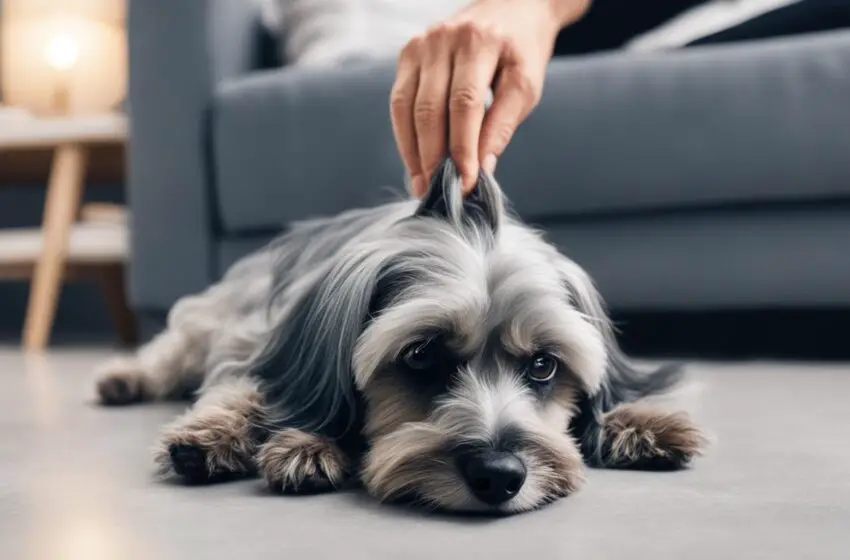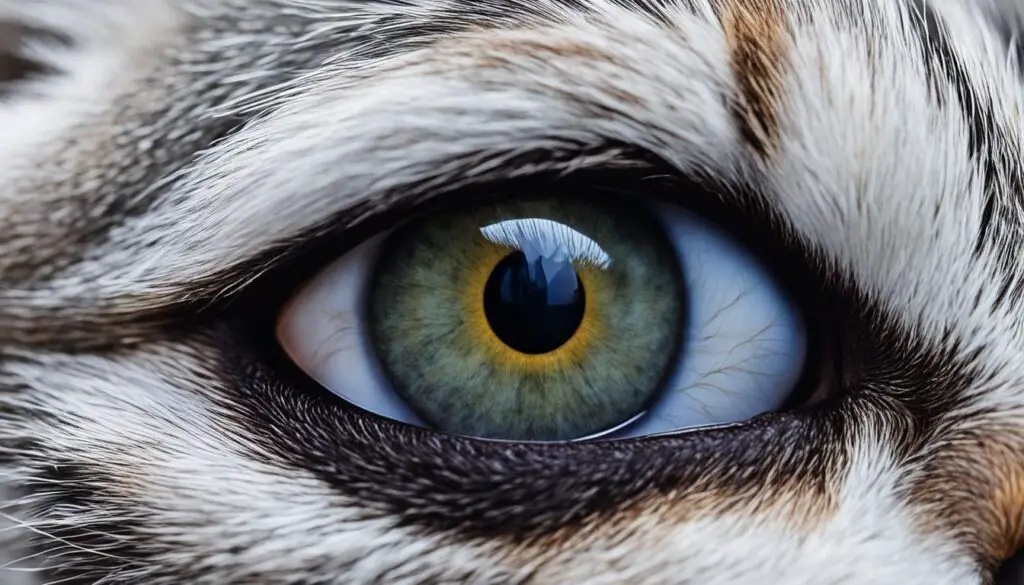Recognizing and Managing Aging Signs in Small Pets

As a pet owner, I understand the importance of recognizing the signs of aging in small pets and providing the necessary care to support their well-being. Just like humans, small pets go through a natural aging process that can impact their physical and cognitive health. In this article, I will provide you with valuable information on how to identify these signs of aging and offer practical tips on managing them.
Key Takeaways:
- Recognizing signs of aging, such as changes in mobility and behavior, is crucial for small pet owners.
- Physical signs of aging may include joint stiffness, weight loss, and changes in fur color.
- Cognitive changes, such as memory loss and disorientation, can also occur in aging small pets.
- Managing aging signs involves providing a balanced diet, regular exercise, and mental stimulation.
- Regular veterinary check-ups are important for addressing any health concerns and providing appropriate care.
Understanding the Aging Process in Small Pets
Small pets, just like humans, go through a natural aging process. As they age, they undergo various changes in their bodies and behavior. Understanding these changes is crucial for providing appropriate care and support to ensure their well-being. Some common signs of aging in small pets include:
- Changes in mobility: Aging pets may experience stiffness in their joints, making it difficult for them to move around or perform activities they used to do with ease.
- Changes in appetite: Older pets may display a decrease in their appetite, which can be attributed to various factors such as dental problems or changes in metabolism.
- Changes in sleep patterns: Aging pets may have disrupted sleep patterns, either sleeping more or having difficulty sleeping through the night.
- Changes in behavior: Small pets may exhibit changes in their behavior as they age, such as increased irritability, anxiety, or decreased social interaction.
“As small pets age, it’s important to be aware of these common aging signs and provide the necessary care to ensure their well-being and quality of life.”
Remember that every pet is unique, and the aging process can vary. Consulting with a veterinarian is essential to develop an individualized care plan for your aging small pet.

The Importance of Early Detection
Recognizing the signs of aging in small pets is the first step towards providing them with the appropriate care they need. Early detection allows pet owners to intervene early on and address any health concerns that may arise. Regular check-ups with a veterinarian can help identify potential age-related issues and ensure timely intervention.
Creating a Supportive Environment
Creating a supportive environment for aging pets is crucial in promoting their overall well-being. This includes providing them with a comfortable living space, ensuring they have easy access to food and water, and incorporating activities that stimulate them physically and mentally. Additionally, adjusting their diet to meet their changing needs can contribute to maintaining their health as they age.
| Change | Effect |
|---|---|
| Changes in mobility | Decreased activity levels, difficulty performing daily tasks |
| Changes in appetite | Potential weight loss, nutrient deficiency |
| Changes in sleep patterns | Restlessness, fatigue |
| Changes in behavior | Increased stress, decreased quality of life |
Identifying Physical Signs of Aging in Small Pets
As small pets age, there are visible physical signs that pet owners can look out for. These signs indicate the natural aging process that their furry companions go through. By recognizing these physical signs, pet owners can take proactive steps to ensure the well-being and comfort of their aging pets.
Some common physical signs of aging in small pets include:
- Joint stiffness: Small pets may experience difficulty in moving their joints or exhibit signs of stiffness. They may have trouble jumping or climbing stairs.
- Weight loss: Aging pets may experience a gradual loss of weight, which can be attributed to a decrease in appetite or changes in their metabolism.
- Changes in fur color: One noticeable physical change is the development of gray hair in their fur. This change in color is a natural progression as pets age.
- Changes in skin elasticity: Aging pets may have looser or less elastic skin compared to their younger counterparts.
It is important for pet owners to monitor these physical signs closely and consult with a veterinarian if any concerns arise. Regular veterinary check-ups can help detect and address age-related health issues early on, improving the quality of life for aging pets.

Recognizing Cognitive Changes in Aging Small Pets
In addition to physical changes, aging small pets may also experience cognitive changes. These changes can include memory loss, disorientation, confusion, decreased responsiveness, and changes in social interaction. Recognizing these signs of cognitive decline is important in order to provide appropriate support and care for aging pets.
“Pets with cognitive decline may appear confused or disoriented. They may forget previously learned commands or become less responsive to their owners. These changes can be distressing for both the pet and their human companions.”
Cognitive changes in pets can manifest in various ways. One common sign of cognitive decline is memory loss. Aging pets may forget their daily routines or become disoriented in familiar environments. They may also experience difficulty in recognizing their owners or familiar faces.
| Signs of Cognitive Decline in Aging Small Pets |
|---|
| Memory loss |
| Disorientation |
| Confusion |
| Decreased responsiveness |
| Changes in social interaction |
Another common cognitive change in aging pets is disorientation. They may become confused about their surroundings and may get lost even in familiar places. Disorientation can lead to anxiety and further contribute to cognitive decline.
Cognitive changes can also result in confusion. Aging pets may exhibit unusual behavior, such as wandering aimlessly or staring into space. They may have difficulty understanding commands or following their usual routines.
In addition, pets experiencing cognitive decline may show decreased responsiveness to their owners or familiar stimuli. They may become less interested in play, interactions, or their favorite activities.
Changes in social interaction can also be indicative of cognitive decline in pets. Aging pets may exhibit alterations in their social behavior, such as becoming more withdrawn, irritable, or exhibiting changes in their interactions with other pets or family members.
It is important for pet owners to be observant of these cognitive changes and consult with a veterinarian if any concerns arise. Early detection and appropriate management strategies can help improve the quality of life for aging pets experiencing cognitive decline.
Managing Aging Signs in Small Pets
When it comes to caring for aging pets, there are several key factors to consider. Providing a balanced and nutritious diet, regular exercise, mental stimulation, and maintaining a comfortable and safe environment are all crucial aspects of managing aging signs in small pets. Additionally, regular veterinary check-ups and consultations are essential in addressing any health concerns and providing appropriate medical care.
Proper nutrition plays a vital role in supporting the overall well-being of aging pets. As pets age, their dietary needs may change, requiring adjustments to their food intake. It is important to provide a diet that is specifically formulated for senior pets, taking into account their unique needs such as joint health, digestion, and weight management. Consulting with a veterinarian or a veterinary nutritionist can help ensure that pets receive the appropriate nutrition to support their aging bodies.
Regular exercise is beneficial for aging pets as it helps maintain their physical health, flexibility, and muscle tone. However, it is important to consider any limitations or restrictions that may come with age. Low-impact exercises such as leisurely walks, gentle play sessions, or swimming can be great options for keeping pets active without putting too much strain on their joints. By engaging in regular exercise, pets can maintain their mobility and overall vitality.
Mental stimulation is equally crucial for aging pets. Engaging their minds through interactive toys, puzzle feeders, and training sessions can help keep them mentally sharp and prevent cognitive decline. Incorporating new activities and environmental enrichment can also provide mental stimulation and prevent boredom. This can include introducing new toys, hiding treats for them to find, or even teaching them new tricks. Mental engagement is an essential part of keeping aging pets happy and content.
| Management Tips for Aging Pets |
|---|
| Provide a balanced and nutritious diet for senior pets |
| Adjust the diet to meet their unique needs such as joint health and weight management |
| Engage in regular exercise tailored to their individual abilities |
| Offer mental stimulation through interactive toys and training sessions |
| Maintain a comfortable and safe environment |
| Regular veterinary check-ups and consultations |
Proper care and attention are crucial for managing aging signs in small pets. By prioritizing their diet, exercise, and mental stimulation, pet owners can provide the support and care necessary to ensure their pets’ well-being throughout the aging process.
In addition to diet, exercise, and mental stimulation, creating a comfortable and safe environment is vital for aging pets. This includes providing cozy beds, easy access to food and water, and minimizing any potential hazards that may cause injury or stress. A secure and predictable environment can greatly benefit their overall well-being.
Regular veterinary check-ups and consultations are essential in monitoring the health of aging pets. Routine examinations allow veterinarians to detect any potential health issues early on and provide appropriate medical care. They can also offer guidance on managing specific conditions commonly associated with aging, such as arthritis or vision changes. By maintaining a proactive approach to their healthcare, pet owners can ensure that any age-related concerns are addressed promptly.
In conclusion, caring for aging pets involves a holistic approach that encompasses their diet, exercise, mental stimulation, and overall environment. By prioritizing their well-being and providing them with the necessary support, pet owners can help their beloved companions age gracefully and enjoy a high quality of life in their senior years.
Conclusion
In conclusion, recognizing signs of aging in small pets and taking steps to support their well-being is crucial for their overall health and quality of life. By understanding the aging process and being aware of common physical and cognitive changes, pet owners can ensure that their furry companions receive the care they need as they age.
Regular observation and monitoring can help identify physical signs of aging, such as joint stiffness, weight loss, and changes in fur color. Consulting with a veterinarian for professional guidance is recommended when concerns arise.
Additionally, recognizing cognitive changes in aging small pets, such as memory loss and disorientation, allows pet owners to provide the necessary support and adjusting daily routines accordingly. Mental stimulation and a comfortable environment can contribute to the well-being of aging pets.
By implementing appropriate management strategies, including a balanced and nutritious diet, regular exercise, and veterinary check-ups, pet owners can ensure their small pets lead happy and fulfilling lives throughout the aging process. Supporting small pets’ well-being is a rewarding journey that enhances the bond between pet owners and their beloved companions.
FAQ
What are the common signs of aging in small pets?
The common signs of aging in small pets include changes in mobility, changes in appetite, changes in sleep patterns, and changes in behavior.
What are the physical signs of aging in small pets?
Physical signs of aging in small pets may include joint stiffness, difficulty in jumping or climbing stairs, weight loss, changes in fur color (such as the development of gray hair), and changes in skin elasticity.
What are the cognitive changes that aging pets may experience?
Cognitive changes that aging pets may experience include memory loss, disorientation, confusion, decreased responsiveness, and changes in social interaction.
How can I support the well-being of my aging pet?
You can support the well-being of your aging pet by providing a balanced and nutritious diet, regular exercise, mental stimulation, and maintaining a comfortable and safe environment. Regular veterinary check-ups and consultations are also crucial.
Why is it important to recognize signs of aging in small pets?
Recognizing signs of aging in small pets is important in order to provide appropriate care and support for their well-being. By understanding the aging process, identifying physical and cognitive changes, and implementing appropriate management strategies, you can ensure that your small pet receives the care they need throughout the aging process.



